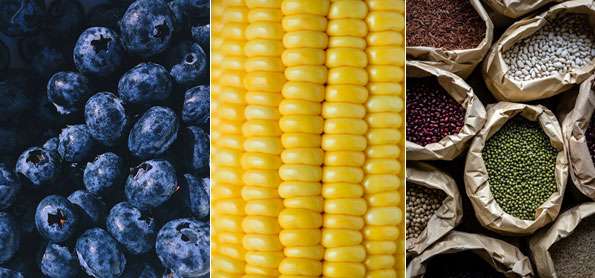How to Lose Weight
Find your care
Our bariatric surgeons use a range of treatments to help you reach weight loss goals and optimize your health. To learn more, call 310-206-0367.
For adults, overweight refers to a weight above the “normal” range. Overweight and obesity ranges are determined by using weight and height to calculate a number called the "body mass index" (BMI). BMI is used because, for most people, it correlates with their amount of body fat. BMI = body weight (in kg) ÷ height squared, in meters.
- An adult who has a BMI between 25 and 29.9 is considered overweight.
- An adult who has a BMI of 30 or higher is considered obese.
- An adult who has a BMI of 35 to 39 is considered to have class 2 obesity.
- An adult who has a BMI greater than 40 is considered morbid obese.
The goal of weight loss is to improve quality of life and to prevent, treat, or reverse the complications of obesity. Many health benefits have been reported with as little as 5% of the body weight. The weight loss options include comprehensive lifestyle program, behavior modification, dietary therapy, exercise, drug therapy and bariatric surgery.
Nutrition

A nutritionally balanced plate will help you lose weight and still meet your dietary requirements. Here are some nutritional tips for people who are struggling with weight loss.
Protein
The United States Dietary Guidelines recommend a daily intake of 10-35% protein. An electronic food journal can help determine if your protein intake is within these guidelines. Protein is essential for repairing the body, creating new tissue and keeping you full. Be sure to choose low fat, heart healthy sources such as turkey, chicken, fish, pork tenderloin, tofu and tempeh. Other sources of protein include low fat dairy, peas, eggs, beans, soy, lean beef and unsalted nuts and seeds.
- Meat: turkey, chicken, pork tenderloin, lean beef (sirloin, flank steak, lean ground beef)
- Fish*: salmon, tuna, shrimp, Mahi Mahi, cod, trout, sardines, anchovies, etc.
- Soy: edamame, tofu, tempeh, unsweetened soy milk
- Low fat dairy**: low sugar Greek yogurt, low sugar Icelandic yogurt, cheese, milk, low sugar Kefir
- Legumes (also a source of carbohydrates): peas, lentils (all varieties), beans (all varieties)
- Eggs
- Unsalted nuts and seeds: walnuts, almonds, pistachios, sunflower seeds, peanuts, etc.
*For sustainable fish recommendations, visit Monterey Bay Aquarium Seafood Watch.
**Many dairy products also contain carbohydrates.
Complex carbohydrates
Carbohydrates are essential for a healthy diet. The United States Dietary Guidelines recommend a daily intake of 45-65% carbohydrates. However, not all carbohydrates are equal. Focus on complex carbohydrates such as fruit, starchy vegetables, whole grains, beans and lentils. Dairy products high in lactose may also be considered a carbohydrate. Complex carbohydrates are rich in vitamins and minerals and high in fiber (except for dairy) to help keep you full. Less healthy sources of carbohydrates include white rice, white bread, sweets, chips, crackers and sweetened grains, all of which can spike blood sugar.

Complex carbohydrates:
- Fruit, all varieties
- Starchy vegetables: peas, corn and potatoes
- Whole grains: brown rice, millet, whole wheat, barley, quinoa, oatmeal, farro, amaranth, bulgur wheat, sorghum
- Beans: pinto, garbanzo (chickpeas), black, kidney, cannellini, navy (white beans)
- Lentils: brown, red, green, French green lentils, black lentils, Lentilles du Puy
- Certain types of dairy (1 serving= 12 g carbohydrate)
Choose healthy fats

What is a healthy fat anyway? Unsaturated fats, particularly monounsaturated and polyunsaturated fats, are the most heart healthy. Fats are important for a variety of functions, including energy, cell growth and brain health. Approximately 20-35% of your intake should be healthy fats. Sources of healthy fats include olive oil, nuts and seeds, avocadoes, olives and omega-3 rich fish. Foods rich in healthy fats are more energy dense (9 calories per gram instead of 4 calories per gram like carbohydrates and protein) so be mindful of food labels.
Avoid unhealthy fats such as trans and saturated fats. Trans fats have traditionally been used for keeping foods shelf stable for long periods of time but unfortunately no amount of trans fat is safe. Saturated fat found in butter, lard and coconut oil and should also be limited. Both trans fats and saturated fats raise LDL, the bad type of cholesterol, increasing your risk for heart disease and stroke. Focus on choosing healthy fats in small amounts for weight management and optimal health.
Healthy fats:
- Olive oil
- Nuts and seeds, particularly walnuts, chia and ground flaxseed
- Avocadoes
- Olives
- Omega 3-rich fish such as salmon, sardines, mackerel, anchovies and herring
Decrease added sugar
Seemingly healthy options such as granola, cereal and yogurt can often be teeming with sugar. Per the current dietary guidelines, limit added sugar to no more than 10% of total calories consumed. Be sure to check labels for added sugar, which may appear under many different names such as honey, agave nectar, maple syrup, fructose, glucose, high fructose corn syrup, sucrose, coconut sugar, brown sugar, raw sugar, brown rice syrup and molasses, to name a few.
Opt for whole foods

The term processed foods can be misleading because most food products are processed in some form. What truly matters is the extent of food processing. There are four levels of processed foods.
- Unprocessed or minimally processed foods have been altered the least, which may include methods such as refrigeration, fermentation, freezing and removing undesirable parts. Examples of minimally processed foods are frozen fruit, chopped vegetables and fermented pickles.
- Processed culinary ingredients include foods that are found in nature but require some modification such as olive oil and flour.
- Foods that have had salt, sugar and fat added are considered processed foods. Typically processed foods include cheese, canned fruits or vegetables, canned fish and breads. Although these foods are processed, there is still some nutritional value and is often very convenient for the consumer.
- Ultra-processing is the unhealthiest form of food processing. Ultra-processed foods offer little to no nutritional value. Think cookies, boxed sugary cereals, hot dogs, chips, soda (diet and regular), candy, frozen pizza, and luncheon meats. Instead choose foods closer to their natural form, such as products with fewer ingredients and a shorter shelf life.
Exercise
The current Physical Activity Guideline set by the U.S. Department of Health and Human Services encourages 150 minutes of moderate cardio and at least 2 days of strength training per week. Exercise is defined as structured, intentional physical activity. If you normally walk a mile to work, this would not be considered exercise. However, if you normally drive and instead decided to walk, this would be intentional physical activity and therefore exercise.
Although 150 minutes of moderate cardio per week is recommended, start with any amount of exercise that you can tolerate. Even 10 minutes of walking twice a day is beneficial. Cardio includes hiking, swimming, cycling, walking, and any other activities that increase your heart rate. For those short on time, you can do 75 minutes of vigorous exercise, such as running or high intensity interval training (HIIT), to reap the same benefit.
Strength training is important because it helps increase muscle mass, which increases your metabolism, allowing you to burn more calories at rest. If you’re not already strength training, start by focusing on your form before lifting heavy weights. Using body weight is a great place to start. Be sure to warm up and cool down to help prevent injury. Keep in mind that over-exercising can inhibit weight loss because it can increase your appetite.
Food journal
In addition to creating awareness about what you’re eating, food journaling also creates a sense of accountability. Sometimes seemingly healthy options, such as yogurts, granolas and cereals, clock in with a surprising amount of calories, fat or sugar. Try a written food journal or electronic based tracker to bring mindfulness about your current intake. Monitor how often you eat, the foods you choose and how are you are feeling.
Sleep
It turns out “beauty sleep” is real after all. Sleep deprivation can interfere with the body’s ability to maintain weight due to a disruption in hormone regulation. This can lead to an increased appetite and cravings for unhealthy foods. Aim for 7-8 hours of sleep per night and seek medical advice if you have difficulty sleeping.
Hydration
Multiple mechanisms are responsible for water’s impact on weight loss. One such reason could be that replacing sugar sweetened beverages (soda, iced teas, coffee, energy drinks) with water can save literally hundreds of calories per day. Another theory is that sometimes the body thinks it is hungry when in reality it is dehydrated. One study at the University of Michigan found that inadequate water intake was correlated with an increased risk of obesity and elevated BMI. Drink up to help slim down.
Emotional health
Have you ever had such a stressful day that you immediately reached for ice cream or chips when you got home? How we feel impacts the types of foods we reach for, portion sizes and eating frequency. When you are craving unhealthy foods, take a minute to assess how you are feeling. Are you feeling bored, tired, sad, lonely or happy? All of these feelings influence our eating patterns. If you want to eat for reasons other than true physical hunger, try another activity such as taking a walk, calling a friend, or finding an enjoyable non-food related activity. Counseling or therapy may be helpful for emotional eating.
Medical weight loss
If you have not met your weight loss goals and you have a BMI greater than 30 kg/m2, or a BMI of 27 to 29.9 kg/m2 with comorbid conditions, you can consider weight loss medications. The goals of the diet medications are to reduce and maintain weight loss and improve health status. A number of medications have been approved by FDA to treat obesity. The commonly used medications include phentermine, Saxenda, Orlistat, Qsymia and Contrave. Please talk to your healthcare providers about weight loss medications if you meet the criteria.
Weight loss surgery
If you have morbid obesity and you failed diet, exercise many times in the past, you may want to think about weight loss surgery. Weight loss surgery complements lifestyle changes such as healthy eating and exercise to facilitate greater, more sustainable weight loss. It reduces appetite and limit the amount of food you can eat. It is the only proven weight loss treatment for long-term and sustainable weight loss. It is indicated for patients with a BMI of >40 or BMI of 35 with comorbidities such as hypertension, diabetes or obstructive sleep apnea.
Contact Us
To schedule a consultation with UCLA Bariatric Surgery in Los Angeles, California, call us at 310.206.0367 or fill out our online form.
For a physician referral, please call (800) UCLA-MD1 (825-2631).
*Weight loss results can vary depending on the individual. There is no guarantee of specific results. Read full disclaimer.